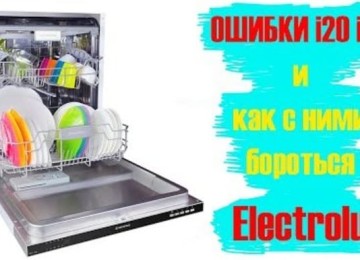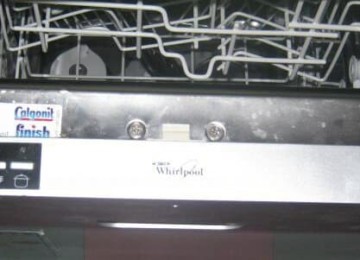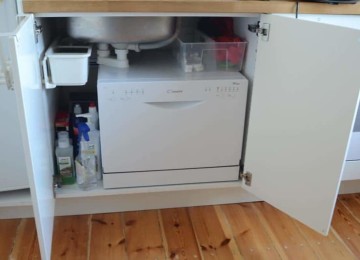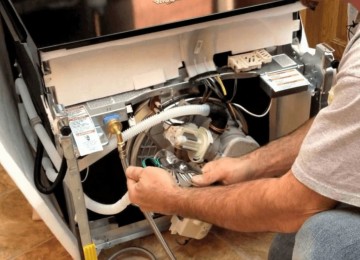Dishwashing machines use water repeatedly: spraying, filtering, draining. If there is still water at the bottom of the dishwasher after the cleaning process is completed, this may be the cause of the equipment problem. There are two options for the development of events: easy and difficult. In the first case, you can fix the breakdown yourself, but if you encounter any difficulties in repairing, you should contact a specialist or service center.
How a dishwasher works
The principle of operation of a dishwasher is similar to a washing machine. First, water passes through the inlet valve and fills the tank. The water level in the pan should not rise above the rubber layer of the door. Next, the water is heated and pumped into the rocker arms using a special pump. Under pressure, the rocker makes circular movements, with the help of which the dishes are cleaned of food residues.
IMPORTANT! After the dishes are completely cleaned, the drainage pump drains all dirty water into the drain, leaving no residual liquid at the bottom.If moisture accumulates on the tray after finishing washing, a jam has formed in the dishwasher.
To completely clean the dishes, the water is heated to maximum and supplied to the bottom of the machine, filtered and sent to work. The water level is assessed by an installed sensor, and powder is added from a dispenser built into the door.
The pressure on the sensor is exerted by:
- Filling the main tank with water.
- Control of dirty water level in the pan.
The central board is designed to record all problems that arise.
Should there be water left in the dishwasher?
Most people consider water accumulation on the pan to be a serious problem. But worries are in vain, since this is a normal phenomenon if accumulation occurs on the bottom, walls, filter, salt compartment. The liquid moisturizes the rubber parts of the machine, and the moisture keeps all mechanisms in working order for a long time.
The basic rule is that the water should not be cloudy, and the rise height cannot be more than 1 cm. If the liquid level is higher, this indicates contamination and problems in the drainage system of the dishwasher.
Reasons why dishwashers do not drain water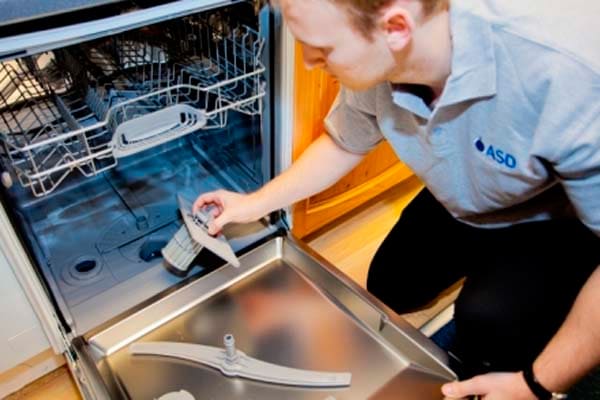
The two main causes of failure are a clogged filter or a kink in the main hose. You can handle such repairs yourself. But if the electronic system or individual parts are damaged, you will have to seek help from a specialist. Before starting repairs, be sure to disconnect the dishwasher from the power supply.
Experts identify several main problems associated with excessive liquid accumulation in the dishwasher.
Water purification filters are clogged
The most common type of failure.Therefore, if a problem occurs, you should first check the cleaning system. Food residues accumulate on the filters, which leads to their rapid failure.
GOOD TO KNOW! Before placing dirty dishes in the dishwasher, it is recommended to remove any remaining food from them. This will significantly increase the service life of the machine's filters.
The device is easily removed, and the mesh cylinder is pulled out of it. The filter is washed with dish soap, cleaned with a toothbrush and rinsed under running cold water. If the contamination cannot be cleaned, it is worth purchasing a new filter. After installation in its original place, three glasses of water are poured through it, and pumping of the waste liquid is turned on. If the solution is pumped out, the problem is solved.
For prevention, the dishwasher should be washed once a month with a soda-vinegar solution. It is recommended to use special means that destroy blockages (2-3 times a month). Such actions will have a beneficial effect on technology.
The drain hose is clogged or pinched
A common cause of stagnation is the incorrect position of the drain hose. If the installation level is too high, the pump cannot cope with the rise of water to the siphon or sewer pipe. As a result, the tube becomes clogged. This result can be obtained if the hose is too long (more than 2 m) or if it is pinched.
ADVICE! When installing or reinstalling equipment, you should take care in advance of the correct length of the hose and choose the size recommended by the manufacturer.
To diagnose the drain hose, you need to follow a few simple steps:
- Move the dishwasher away from the wall and check the hose for kinks. If they are present, level and check the passage of water.The recommended distance of the machine from the wall is 30 cm.
- If the reason is not a kink, you should inspect the hose for food debris, dirt or scale inside. To do this, disconnect the tube and place it in a bucket, including draining. If the water pressure is strong, the problem is not due to contamination. If a plug forms, you can use special tools or a long wire to clean the dirt from the inside. The procedure should be carried out carefully, without damaging the walls.
An additional option is to purchase and install a new hose.
Failure of the circulation pump or drainage system
If water accumulates in your dishwasher, it may be due to a broken drainage system or pump. It can be checked in the same way as a drain hose: good pressure means the system is working, bad pressure means cleaning is required. Special means are used to remove blockages.
To check the operation of the circulation pump:
- Remove the pan and impeller. If there are blockages on it, clean it and start checking for functionality. To do this, carefully rotate it 90 degrees. If you have difficulty turning, additional cleaning will be required.
- After removing the impeller, access to the pump opens. You need to take the wires coming from the device and connect it to a 220 V network. If nothing happens, you will have to contact a specialist and install a new pump.
After completing all the steps, the cleaned pump is installed in place, and the water pumping mechanism is turned on. If the mechanism is working properly, the repair is considered complete. The problem can become much larger if liquid accumulates at the bottom of the machine - you should immediately call a specialist.
The water level sensor is faulty
Water may accumulate in the pan due to a broken pressure switch (water level sensor). To check, you need to remove the pressure sampling chamber. This is a small plastic box installed upside down in the washing mashine box. Afterwards you will need to blow out the pipe and reconnect it. After the first blow, you should blow again. If a click is heard, the sensor is in working order.
The second way to check functionality is to ring the electrical circuit. To implement this, you will need a special tool for testing mechanisms.
If the sensor does not pass the test, the reason for the stagnation of water lies in it. It will not be possible to repair a broken pressure switch. When buying a new one, you should take the dishwasher's passport with you, since each model is equipped with different firmware.
IMPORTANT! If the machine’s warranty period has not yet expired, you should contact the service center for a free sensor replacement. Do-it-yourself repairs will void the warranty.
The water level sensor can also break due to oxidation of the contacts, a defect in the pressure-reducing tube, or during long-term operation.
Electronic control module is faulty
If all the parts of the dishwasher are in order, but water continues to accumulate, you should pay attention to the serviceability of the electronic module. Its task is to control all technical processes. It is he who gives commands to the entire system. Failures in the operation of EVs become one of the reasons for the accumulation of excess fluid.
It is not possible to independently check the functionality of the module, since specialized tools and software are used for this. But modern dishwashers have a screen that displays all system errors that occur.The code can be used to easily determine the cause of the failure by looking at the operating instructions. If the code is not in the brochure, all the information can be found freely available on the Internet.
When should you call a technician? 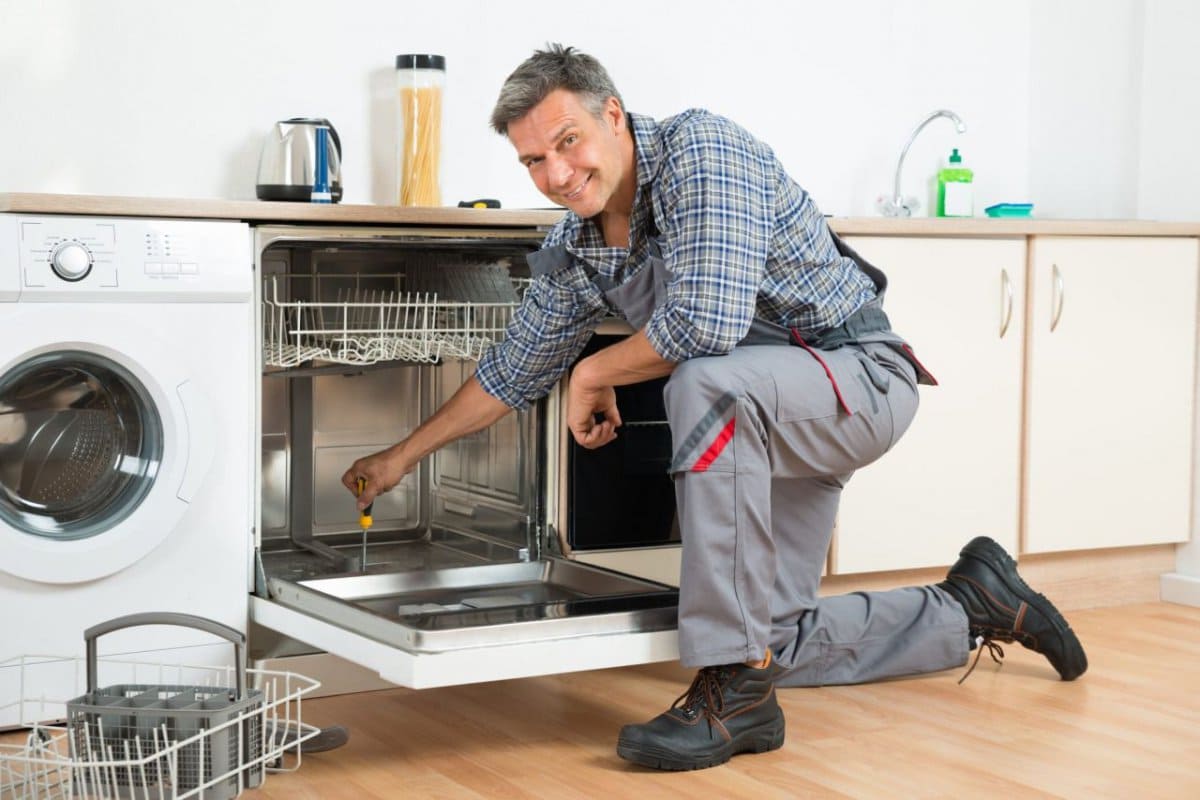
If, after a thorough independent check and elimination of all visible causes, water continues to accumulate in the chamber, you should contact a specialist.
This may indicate serious problems with the dishwasher, such as:
- a broken water level sensor;
- a faulty drain pump;
- a failure or breakdown of the electronic control module.
The last problem can be solved by reflashing. But none of them can be solved without the intervention of a technician.
How to prevent problems with drainage? 
To maintain the operation of the dishwasher and prevent breakdowns, you should follow several tips:
- Initially, install the machine correctly, following the manufacturer's instructions.
- Clean the filter a couple of times a month and run the dishwasher once a month without loading dishes. Wipe the door seal in a timely manner.
- Clean dishes from food residues.
- Use specialized detergents for washing in dishwashers, buy substances for softening water.
Following these simple rules will extend the service life of the equipment and save you from prematurely calling a technician.
If problems arise with the operation of the dishwasher, the device is turned off and fully diagnosed. First, the most common options are checked that can be fixed independently. If the problems are serious, you should immediately contact the service center or call a technician to your home. Repairs can be avoided by observing preventive maintenance and operating rules for the equipment.






